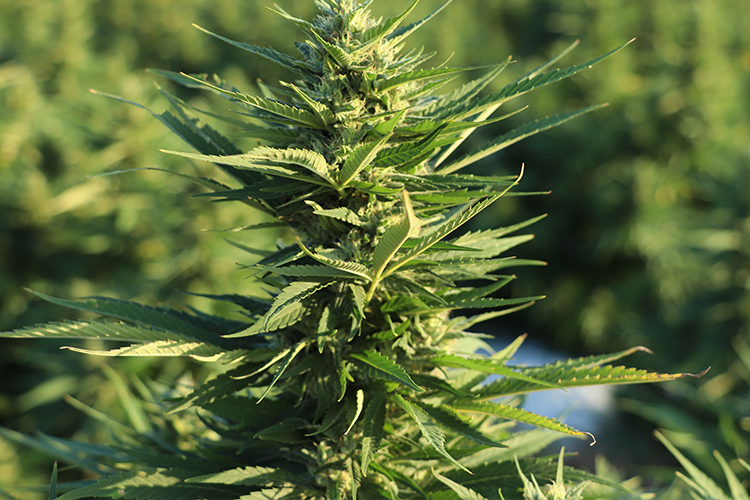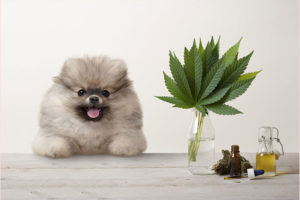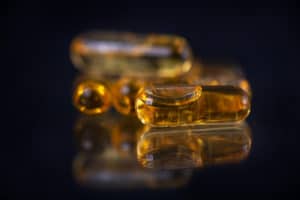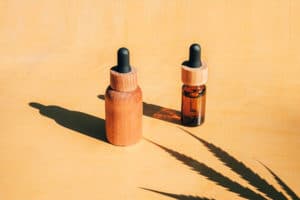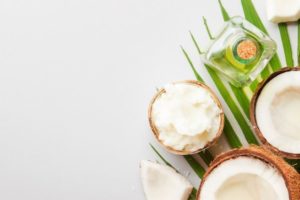Have you ever wondered how to tell CBD flower from weed? With the increasing popularity of CBD products and the ever-changing landscape of cannabis laws, it is crucial to understand the distinctions between these two types of cannabis. This comprehensive guide will walk you through the differences between CBD flower and weed – from their origins in the cannabis plant to their legal status and potential benefits and risks. So, let’s dive in!
Key Takeaways
- Understanding the Cannabis Plant involves learning about two primary species (Cannabis Sativa and Indica) with various uses.
- CBD flower is derived from hemp plants, federally legal in the US due to low THC content. Weed has higher levels of THC & psychoactive effects.
- Identifying CBD Flower vs Weed requires understanding their key characteristics such as appearance, smell/taste & cannabinoid ratios. Consult lab reports & growers for safety assurance before use.
Understanding the Cannabis Plant
Before we explore the differences between CBD flower and weed, let’s first get to know the cannabis plant. The cannabis plant comprises two primary species: Cannabis Sativa and Cannabis Indica. Both species share some similarities, but they also possess distinct characteristics and effects that set them apart. The plant is a treasure trove of cannabinoids, such as THC and CBD, which interact with our endocannabinoid system (ECS) to maintain homeostasis and regulate various physiological processes.
Cannabis has a rich history of being employed for various purposes, including:
- Spiritual and religious ceremonies
- Medicinal treatments
- Recreational use
- Fabrication of textiles, rope, and paper
While both hemp and marijuana plants belong to the Cannabis Sativa family, they differ in their uses and effects. The hemp plant is primarily harvested for its stalks, seeds, and CBD hemp flower for commercial purposes, while marijuana is sought after for its calming, euphoric, and psychotropic effects.
Cannabis Sativa
Cannabis Sativa, versatile and widely cultivated, is used for multiple purposes, one of which is the production of CBD buds. The plants are typically taller and have more slender leaves than their Cannabis Indica counterparts, making them easily distinguishable. These plants are known for their invigorating and energizing effects, which can be attributed to their unique cannabinoid and terpene profiles.
Beyond psychoactive marijuana buds, hemp bud from the Cannabis Sativa plant is harvested for its rich CBD content and minimal THC content (below 0.3 percent). This makes hemp bud, or CBD flower, an increasingly popular choice for those seeking the potential therapeutic benefits of cannabis without the intoxicating effects of THC. In this context, hemp flowers refer to the same part of the Cannabis Sativa plant as hemp bud.
Cannabis Indica
Cannabis Indica plants, on the other hand, are renowned for their relaxing and sedative effects, often referred to as a ‘body buzz’. These plants are generally shorter and have broader leaves compared to their Sativa counterparts. Indica strains are frequently used for pain relief and to promote sleep, making them a popular choice among the medical community.
The primary psychoactive component of marijuana, responsible for its psychotropic effects, is THC (delta-9-tetrahydrocannabinol). However, the Cannabis Indica plant also contains other cannabinoids, such as CBD, which contribute to its overall therapeutic potential without producing the “high” typically associated with THC.
Defining CBD Flower and Weed
Having differentiated the two main species of the cannabis plant, let’s proceed to define CBD flower and weed. CBD flower is derived from hemp plants, which contain high levels of CBD and less than 0.3% THC. This means that CBD flower is non-intoxicating and won’t produce the “high” typically associated with weed.
Weed, or marijuana, is derived from cannabis plants containing higher THC levels, usually above 0.3%. Weed is known for its psychoactive properties, producing the intoxicating effects that many people associate with cannabis use. The key difference between CBD flower and weed lies in their cannabinoid profiles, with CBD flower having a higher CBD to THC ratio and weed having a higher THC to CBD ratio.
CBD Flower
As previously stated, CBD flower originates from hemp plants, boasting high CBD concentrations and less than 0.3% THC. This makes CBD flower non-psychoactive, meaning it won’t produce the intoxicating effects commonly associated with THC flower and marijuana use.
CBD flower is legally defined as cannabis containing 0.3% or less of the THC compound. This distinction in THC content is crucial, as it affects the legal status of CBD flower in various jurisdictions. Federally, cbd flowers are legal in the United States as long as they adhere to the limited THC levels set by federal and state regulations.
This has led to a surge in the popularity of CBD flower and a wide range of CBD products, as more people become aware of its potential therapeutic benefits without the psychoactive effects of marijuana.
Weed
Conversely, weed refers to marijuana, stemming from cannabis plants that typically contain THC levels above 0.3%. The higher THC content in weed is responsible for its psychoactive effects, producing the “high” sensation that users often seek. In addition to THC, weed also contains other cannabinoids, such as CBD, which can contribute to its overall therapeutic potential.
However, due to its psychoactive nature, weed is subject to different legal regulations than CBD flower. Federally, weed remains illegal, and its legal status varies from state to state. Consumers must consider the legal repercussions of using weed, along with its potential risks and benefits.
Identifying CBD Flower vs. Weed: Key Characteristics
Despite sharing some similarities due to their common origin in the cannabis plant, CBD flower and weed can be differentiated by several key characteristics. These include:
- Appearance
- Smell
- Taste
- Cannabinoid ratios
By understanding these differences, consumers can make informed decisions when choosing between CBD flower and weed products.
While appearance, smell, and taste can offer hints about a product being CBD flower or weed, these factors alone may not suffice to distinguish the two. The most reliable way to determine the difference is by examining the cannabinoid ratios, specifically the levels of THC and CBD present in the product.
Appearance
While CBD flower and cannabis flowers may look similar at first glance, there are some subtle differences in their appearance that can help distinguish one from the other, such as the characteristics of a marijuana flower. CBD flower generally exhibits:
- Thinner leaves
- Less densely packed buds
- Varied colors, ranging from light to deep green, with some buds even featuring multicolored hues of purple, orange, and green.
However, these differences in appearance may not be apparent to the naked eye, especially for those who are not familiar with cannabis plants. In such cases, it is advisable to rely on other factors, such as smell, taste, and cannabinoid content, to differentiate between CBD flower and weed.
Smell and Taste
Both CBD flower and weed share similar smells and tastes due to their terpene profiles. Terpenes are aromatic compounds found in cannabis plants that give them their distinct aroma and flavor. In general, CBD flower and weed both have earthy and pleasant aromas, although the intensity of the smell may vary between the two.
Similarly, the taste of CBD flower and weed can also be quite comparable, as they both come from the same plant, with both having sweet and earthy flavors. However, these similarities in smell and taste alone cannot be used to accurately differentiate between CBD flower and weed, as they are largely influenced by the terpene profiles of the respective plants.
A more reliable method to differentiate CBD flower from weed is by examining the cannabinoid ratios, particularly the levels of THC and CBD.
Cannabinoid Ratios
The key difference between CBD flower and weed lies in their cannabinoid ratios. CBD flower is characterized by its high CBD content and low THC content (less than 0.3%). This means that CBD flower does not produce the intoxicating effects typically associated with weed, making it an appealing option for those seeking potential therapeutic benefits without the “high.”
Weed, on the other hand, contains higher THC levels, usually above 0.3%. The higher THC content in weed results in its psychoactive properties, producing the intoxicating effects that users often experience. By examining the cannabinoid ratios of a product, consumers can accurately determine whether it is CBD flower or weed and make informed decisions about which product best suits their needs and preferences.
Legal Aspects: CBD Flower vs. Weed
The legal status of CBD flower and weed varies depending on federal and state laws. Federally, CBD flower is legal as long as it contains less than 0.3% THC, while weed remains illegal. However, the legal landscape for both CBD flower and weed is constantly evolving, with numerous states authorizing the use of medical and/or recreational marijuana.
Consumers need to understand the legal implications of using CBD flower and weed within their respective jurisdictions. This can help individuals avoid potential legal consequences and ensure that they are using these products responsibly and in accordance with local laws.
Federal Law
Under federal law, CBD flower is considered legal as long as it contains less than 0.3% THC. This means that the cultivation, production, and use of CBD flower are permissible under federal law, although state-level regulations may apply.
In contrast, weed remains illegal at the federal level, classified as a Schedule I drug, making it unlawful to possess, distribute, or manufacture.
Despite the federal prohibition on weed, numerous states have authorized the use of medical and/or recreational marijuana, creating a complex legal landscape for consumers to navigate. This underscores the importance of understanding the legal distinctions between CBD flower and weed and their respective legal statuses.
State Law
State laws regarding CBD flower and weed can vary significantly, with some states allowing recreational and medical use of weed, while others only permit the use of CBD products or have strict prohibitions in place.
It is crucial for consumers to be aware of the regulations in their state concerning CBD flower and weed before purchasing or consuming them. This knowledge can help individuals avoid potential legal consequences and ensure that they are using these products responsibly and in accordance with local laws.
Tips for Differentiating CBD Flower from Weed
Consumers can differentiate CBD flower from weed by:
- Scrutinizing product labels and packaging
- Examining lab reports for precise cannabinoid content information
- Seeking further clarification from growers or retailers
By following these tips, individuals can make informed decisions about which product best suits their needs and preferences, while also ensuring that they are using these products responsibly and in accordance with local laws.
For consumers aiming to make informed decisions about cannabis use, understanding the differences between CBD flower and weed is vital. Understanding these distinctions can help individuals:
- Avoid potential legal consequences
- Reduce the risk of negative side effects
- Ensure that they are using these products responsibly and in accordance with local laws.
Checking Labels and Packaging
Labels and packaging can provide critical information about a product’s cannabinoid content, including the levels of THC and CBD present. This information can help consumers determine whether a product is CBD flower or weed, as the THC content is a key distinguishing factor between the two. If the THC content is not indicated on the label, consumers can attempt to trace the product back to its laboratory tests by searching for a QR code or a batch number.
In cases where information on the product’s laboratory tests is not available, it is advisable to avoid the product and seek alternatives that provide transparent and accurate information on their cannabinoid content. This can help consumers make informed decisions about their cannabis use and avoid potential legal consequences or negative side effects.
Examining Lab Reports
Lab reports can provide detailed information on a product’s cannabinoid content, including the levels of THC and CBD present. Accessing lab reports can be done through QR codes or by contacting the grower. These reports typically contain information on:
- Cannabinoid profile
- Terpene profile
- Potency
- Purity
- Contaminant testing
- Batch information
By examining lab reports, consumers can gain a comprehensive understanding of the composition of CBD flower and weed products, allowing them to make informed decisions about their cannabis use. This can help individuals:
- Avoid potential legal consequences
- Reduce the risk of negative side effects
- Ensure that they are using these products responsibly and in accordance with local laws.
Consulting with Growers or Retailers
Growers and retailers can provide additional information on their products and help clarify any uncertainties that consumers may have. Consulting with growers can offer insights into the cultivation and characteristics of CBD flower, such as:
- the specific strain or variety used
- growing conditions
- CBD content
- terpene profile
- testing processes
- storage recommendations
Similarly, retailers can provide details about the source of the CBD flower, the testing processes employed, and the recommended storage instructions. By consulting with growers or retailers, consumers can gain assurance of product safety and quality, as well as additional information that may not be readily accessible through labels or lab reports.
Potential Benefits and Risks of CBD Flower and Weed
CBD flower and weed have potential benefits and risks associated with their use. CBD flower may offer therapeutic benefits such as pain relief, relaxation, and anxiety reduction without the intoxicating effects of THC. In contrast, weed, with its higher THC content, can pose risks such as addiction, impaired cognitive function, and potential legal consequences.
Understanding the potential benefits and risks of using CBD flower and weed can help individuals make informed decisions about which product best suits their needs and preferences. By being aware of the differences between CBD flower and weed, consumers can make informed decisions about their cannabis use, avoid potential legal consequences, and reduce the risk of negative side effects.
As the legal landscape surrounding cannabis continues to evolve, it is crucial for individuals to stay informed about the distinctions between these products and their respective legal statuses.
Benefits of CBD Flower
CBD flower is touted for its potential therapeutic benefits, which include pain relief, relaxation promotion, and anxiety reduction. Additionally, using CBD flower may help individuals break smoking habits, promote sleep, and lessen cravings for tobacco and heroin. As CBD flower is non-intoxicating, it provides an appealing alternative for those seeking the potential benefits of cannabis without the mind-altering effects of THC.
In comparison to other methods of consumption, such as orally taking CBD products, smoking or vaping CBD flower can maximize absorption and utilization of CBD within the body, resulting in a faster and stronger effect. However, it is essential to consider the potential risks associated with smoking and vaping, as well as consult with healthcare professionals before incorporating CBD flower into one’s wellness routine.
Risks of Weed
Weed, due to its higher THC content, may present multiple risks to users. These risks may include addiction, impaired cognitive function, and potential legal consequences.
The potential risks associated with addiction include:
- Physical and psychological dependence
- Cravings
- Withdrawal symptoms
- Impaired cognitive function, which may manifest as difficulty concentrating, memory issues, and reduced decision-making abilities.
Lastly, the use of marijuana may result in fines, incarceration, and the creation of a criminal record. Understanding these risks can help individuals make informed decisions about their cannabis use and avoid potential negative consequences.
Summary
In conclusion, understanding the differences between CBD flower and weed is crucial for consumers who want to make informed decisions about their cannabis use. By recognizing the distinctions between these two types of cannabis, individuals can avoid potential legal consequences, reduce the risk of negative side effects, and ensure that they are using these products responsibly and in accordance with local laws. Stay informed and choose wisely – your well-being and legal standing may depend on it.
Frequently Asked Questions
How do I know if its CBD or weed?
To tell the difference between CBD and weed, check the THC content: CBD flower contains less than 0.3% THC, while marijuana has more than 30%, so CBD won’t produce an intoxicating effect.
Is smoking CBD flower the same as weed?
No, smoking CBD flower is not the same as weed. While they have similar looks, smells, and tastes, the main difference lies in their chemical components. CBD flower has low levels of THC while weed contains high levels of THC and produces an intoxicating effect.
What does CBD smell like weed?
CBD itself does not have any scent, but some products containing it are designed to smell like marijuana. Hemp-derived CBD may give off a strong smell that is instantly recognizable, and burning cannabis will have its own distinct odor. Overall, the cannabinoid molecules don’t have a scent or flavor, but their presence in marijuana flowers can make CBD products smell similar to weed.
Is CBD flower legal?
CBD flower is federally legal in the United States, as long as it contains less than 0.3% THC; however, state laws may vary.
What are some potential benefits of using CBD flower?
CBD flower has the potential to provide therapeutic benefits such as pain relief, relaxation, anxiety reduction, and promoting sleep, making it a promising option for those seeking natural remedies.
